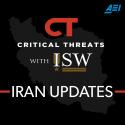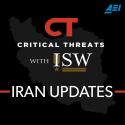Russian Offensive Campaign Assessment, February 13, 2023
Feb 13, 2023 - ISW Press
Moscow continues to leverage its relationship with Iran to provide military support for the war in Ukraine. The Ukrainian Main Military Intelligence Directorate (GUR) intercepted audio on February 10 reportedly of two Shahed drone operators coordinating targets in what the GUR claimed was a "Kurdish dialect interspersed with Farsi words." ISW cannot identify the dialect in the audio intercept with high confidence, but the fact that the individuals in the audio clip are Shahed operators indicates that they may be operators from Iranian Kurdistan who are likely affiliated with the Islamic Revolutionary Guard Corps (IRGC). It is far less likely that Russia has been able to identify or import individual Kurdish militants with experience operating drones to conduct Shahed strikes on Ukraine. ISW has previously reported that IRGC-affiliated elements are likely supporting Russia’s use Shahed drones by acting as operators and trainers, and the operators in the GUR intercept are likely part of the same line of effort. UK outlet The Guardian relatedly reported on February 13 that Iran has smuggled at least 18 long-range drones to Russia using boats and Iranian state-owned aircraft. The Guardian found that these shipments include six Mohajer-6 drones and 12 Shahed-121 and 129 drones, which have air-to-ground strike capabilities and are designed to deliver a payload to the target and return to base, unlike the Shahed-131 and 136 loitering munition-type drones that Russian forces have widely used in Ukraine thus far. Russian milbloggers noted on February 13 that IRGC-affiliated Il-76 cargo aircraft routinely fly to Russia, suggesting that Tehran consistently provides Moscow with a variety of material using IRGC-affiliated planes. These data points, taken in tandem, suggest that Russia continues to rely on Iran for military and technological support in Ukraine and that some Iranian personnel are likely in Ukraine directly supporting Russian attacks on Ukrainian civilian infrastructure, as ISW has previously reported.










